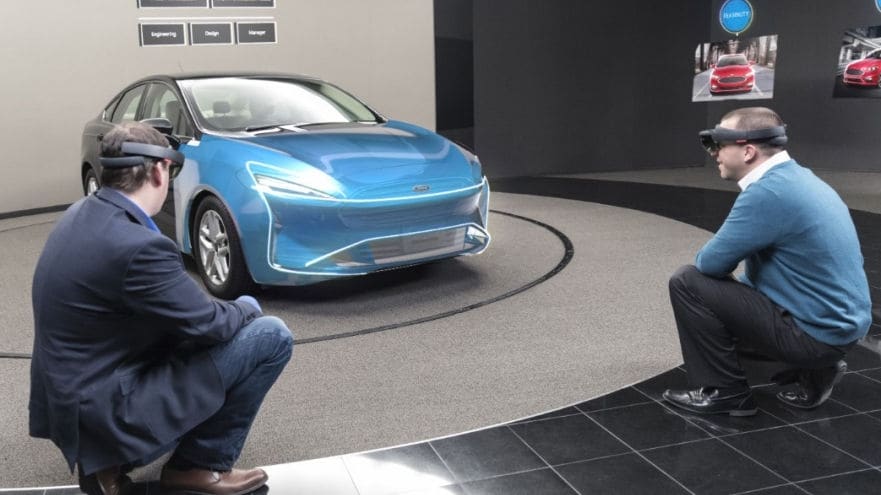

By Kelsey Blaylock
After collaborating with Microsoft HoloLens technology, Ford’s designers cut their work time in half, and have improved communication with engineers and even employees who can’t be present at meetings.
Ford’s Dearborn studios have only tested this new technology for a year now, and have already gained nothing but efficient feedback. Designers wear wireless headsets that allow them to visualize what aspects to place in the vehicles, which allows them to get the overall impact of the design as if the tangible vehicle was in front of them.
From adding side mirrors to grilles, they can now get a better generalization of each piece and how it would affect the driver, and the appearance of the vehicle itself.
A Windows 10 computer is implanted inside the headsets, which makes them wireless and wearable. HoloLens technology includes mixed reality, giving them the ability to see holograms that can be utilized and projected onto the vehicle or a clay model. Other than implementing ideas, all the designer has to do is put on the headset and let it scan and plot the vehicle.
This gives designers the option for quicker proposals, and to interact with engineers in order to get a more accurate outlook of the customer’s experience. Instead of designers having to explain their concepts, this gives them the chance to show their ideas making the whole process easier and less time consuming.
The headsets can be synced and authorized for numerous team members to be included. Another alternative offered is recording audio notes for those who could not be participants at the time of the demonstration.
Ford has only just begun with HoloLens and plans on extending this application to the engineering side of the company, as well as continuing development. This is the future of Ford, and with cutting edge technology, it has given their designers and engineers a chance to stay ahead of the competition.
“HoloLens allows a whole team of people to collaborate, share and experience ideas together. Mixing virtual and physical models is exciting, because it helps our designers and engineers communicate effectively and ideate to see what the future looks like earlier in the process. This allows great freedom and efficiency in how prototypes are created or changed.”
— Elizabeth Baron, Ford virtual reality and advanced visualization technical specialist